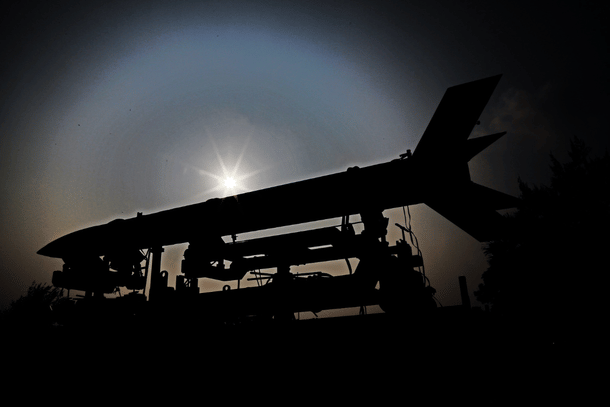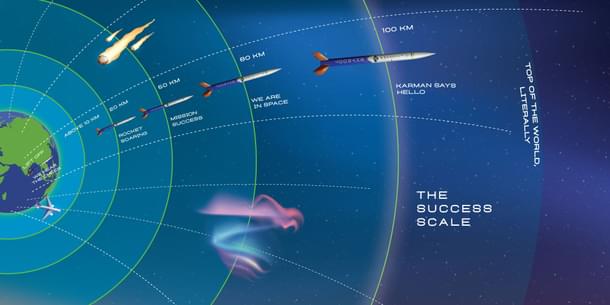Science
Mission Prarambh: India’s Historic Space Launch Of A Private Rocket Successful
Karan Kamble
Nov 18, 2022, 11:43 AM | Updated 02:42 PM IST
Save & read from anywhere!
Bookmark stories for easy access on any device or the Swarajya app.


India’s first-ever private rocket launch has been accomplished successfully.
“Mission Prarambh” thus marks a great ‘beginning’ for India's private space technology sector.
The rocket is called “Vikram-S” and its maker is Hyderabad-based Skyroot Aerospace.
Vikram-S is a single-stage suborbital space launch vehicle named after the founder of the Indian space programme, Dr Vikram Sarabhai.
It lifted off at 11.30am on 18 November from the Sounding Rocket Complex at the Satish Dhawan Space Centre, Sriharikota (SDSC SHAR), off the coast of Andhra Pradesh.
India’s spaceport SDSC SHAR (Sriharikota Range) is responsible for providing launch base infrastructure for the Indian space programme.
Ascent of @SkyrootA's Vikram-S launcher today from Sriharikota #MissionPrarambh pic.twitter.com/ysXWA61FgB
— ISRO (@isro) November 18, 2022
Inclement weather conditions had put off launch by three days from the earlier liftoff date of 15 November.
A new launch window between 11 am and noon on 18 November was authorised by the space regulator Indian National Space Promotion and Authorisation Centre (IN-SPACe) on 16 November.
Constituted in June 2020, IN-SPACe is a single-window autonomous government agency to promote, permit, and oversee private sector space-based activities.
With IN-SPACe's thumbs up, Skyroot became the first Indian company to receive authorisation for launching a rocket.
The launch went ahead as planned on the new date, thanks to favourable weather. "Really, I thank the rain god also that we are lucky that we got a favourable launch window during this cyclonic month," said IN-SPACe technical director Rajeev Jyoti.
“We made history today by launching India’s first private rocket. It is a symbol of new India, and just the prarambh (beginning) of a great future,” Skyroot co-founder Pawan Kumar Chandana said.
Vikram-S, 6-m tall and weighing 545 kg, took off with three customer payloads by Space Kidz India, Bazoomq Armenia (foreign customer), and N-Space Tech India. It also carried "Hello Space!" cards, which contained the good wishes of 300 people who contributed to the mission from Skyroot, the Indian Space Research Organisation (ISRO), and IN-SPACe.
The rocket has a payload capacity of 83 kg, which it can ferry up to an altitude of 100 km (the Kármán line).
In today's flight, the rocket reached its peak velocity of Mach 5, or five times the speed of sound (hypersonic speed), in just 20 seconds. It then hit a peak altitude of 89.5 km before descending, as planned, for a splashdown in the Bay of Bengal.
The goal was to cross 80 km altitude, considered to be the threshold for entry into space, as per one measure. (The Kármán line, a more widely accepted boundary, is 100 km from the Earth's surface.)

The historic rocket is powered by solid-fuelled propulsion, cutting-edge avionics, and all-carbon-fibre core structure. It features 3D-printed solid thrusters for spin stability.
Vikram-S was developed in a record time of two years, with the groundwork beginning late 2020 and about 200 engineers' hands on deck.
It is paving the way for Skyroot’s Vikram series of orbital-class space launch vehicles that are being developed to cater to the small satellite market. The Vikram-1 orbital vehicle is planned for launch next year.
The Vikram-S flight has validated many of the technologies — as much as 80 per cent of the onboard space technology — that will feature across the Vikram fleet.
Telemetry, tracking, inertial measurement, global positioning system (GPS), on-board camera, data acquisition, and power systems were among the avionics systems that were tested on this technology demonstrator flight.
The rocket was said to have met all flight parameters.
"Kudos, ISRO! You have this day, on the 18th of November 2022, added yet one more feather in your much-decorated hat," said Dr Jitendra Singh, the Minister of State (Independent Charge) for Science and Technology and Earth Sciences, in his post-launch address at the Sriharikota facility.
"And thanks, ISRO, for putting India as a frontline nation in the years to come, and a nation to which others would look forward to (for) vital cues in the journey of space sector," the Minister added.
"Ladies and gentlemen, this Prarambh mission symbolises not only India's first private rocket launch; it also symbolises the potential of New India," Chandana said, speaking after Dr Singh.
Skyroot Aerospace wants to build high-technology, low-cost, reliable launch vehicles. Co-founders Chandana and Naga Bharath Daka previously worked with ISRO as rocket scientists for about a handful of years before starting up in 2018.
Chandana told the Week magazine a couple of years ago that Skyroot wants to make space flight as cheap as an air flight in the long run “so that anybody can go to space.”
The global space economy is valued at just over $450 billion, out of which India’s share is roughly about 2 per cent. The key to increasing India’s contribution to the global space output lies with the private sector.
That is why the Government of India opened up the space sector to private enterprises in June 2020 and made room for sharing ISRO know-how and infrastructure with private players.
The move was meant to enable companies who wanted to build their own rockets, satellites, and ground-based equipment to support Indian space activities.
In 2021, Skyroot formally signed up with ISRO and secured access to ISRO’s facilities and technical expertise as they went about developing their launch vehicle.
In June 2022, the startup signed an agreement (MoU) with IN-SPACe, which enabled the launch of its rocket from the ISRO spaceport.
And now, just two years after the unlocking of the space sector for private participation, a private player has launched its own, privately designed and developed rocket from ISRO’s launch base.
The startup seems set for further greatness as it receives big backing from investors. Just in September this year, Skyroot raised $51 million (over Rs 403 core) from Singapore GIC (Government Investment Corporation) in the largest-ever funding round in the Indian private space technology sector.
This will hold not only Skyroot but also the Indian space ecosystem as a whole in good stead, with other private space entities making significant moves as well, and in a variety of areas.
According to Dr Singh, 102 startups are working in cutting-edge areas of space like space debris management, nano-satellites, launch vehicles, ground systems, and space research over the last three to four years.
"India’s space economy is set to grow to US $13 billion and the space launch segment is estimated to grow the fastest by 2025 at a CAGR (compound annual growth rate) of 13 per cent, which will be further spurred by growing private participation, latest technology adoption, and low cost of launch services, and this launch is a major landmark for this growth to take place in the coming years,” said lieutenant general A K Bhatt, director general of the Indian Space Association.
On this year’s New Year Day, Skyroot Aerospace had said in a tweet: “2022 is going to be a milestone year for Skyroot and the entire space ecosystem in India."
As the year nears its end, it can be said definitively: yes, indeed, it's a milestone year!
Karan Kamble writes on science and technology. He occasionally wears the hat of a video anchor for Swarajya's online video programmes.





